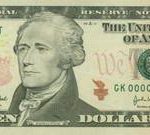The Bank of Japan released the minutes of its previous meeting last night, so we now officially know what?s bothering them.
While the inflation rate has edged up to 0.7%, it is still miles (kilometers) away from its two year target of 2.0%. The 100% growth in the money supply promised by the end of 2014 is arriving on schedule. Since October, 2012, the central bank?s balance sheet has ballooned by an awesome 45%.
However, the desired effects on the economy are starting to fade. Real wages are still falling in September for a hair raising 16 months in a row, creating a deflationary effect on the economy that is huge. Prime Minister, Shinso Abe, is also shooting himself in the foot by raising taxes next April, and again in 2015.
It is a problem that is all too familiar to those of us here in the US. The BOJ can step on the accelerator all it wants. But as long as the Diet (their parliament) applies the brakes at the same time to keep the deficit hawks happy, the economy will go nowhere. Indeed, the recent data releases from Japan, white hot in the first half of the year, are starting to cool.
So the BOJ will do exactly as Ben Bernanke has done and throw more gasoline on the fire in the form of further, aggressive monetary stimulus. In layman?s terms this means it?s time to speed up the yen printing presses. That is the only way the central bank can offset the fiscal drag coming out of Tokyo. This is terrible news for the Japanese yen.
The BOJ is certainly going to pursue what is working. By engineering a collapse of the yen in the first half of 2013, they delivered a windfall profit for Japanese exporters. Dollar sales, when brought home are now worth a quarter more. That?s how Toyota was able to announce yesterday blockbuster earnings up 70% YOY.
Rising sales in an appreciating currency deliver a hockey stick effect on profits. The BOJ will take more of that, thank you very much.
This means that it is time to sell short the Japanese yen once again. When we peaked in March around the ?100 level in the cash markets, I thought that we could enter a sideways consolidation that could last as long as six months, since the recent move down had been one of the sharpest in foreign exchange history. That is exactly what we got. In recent months, the currency has almost been nailed to the 50 day moving average.
So I am taking this opportunity to return to a short position in the Japanese yen, the currency that everyone loves to hate. The December 20 expiration gives us a nice ?RISK ON? position in the run up to the yearend, which should be the correct way to lean. It also gives us a December position we can carry after our five November positions expire deep in the money next week.
I have written endlessly on the fundamental case for a weak yen for the past two years (for a link why you should sell short the yen, please click ?Rumblings in Tokyo?, here ?New BOJ Governor Craters Yen? , and finally here ?New BOJ Governor Crushes the Yen?.
From a technical point of view, what is unfolding here is classic chart reading 101. When you get a huge move over a short period of time, such as the 25% collapse in the yen that started in November, 2012, the consolidation and digestion period that follows can be very long. A rapidly declining 200 day moving average, now at $102 in the (FXY) should cap any short covering rallies.
Japanese portfolio managers and corporations have now had half a year to realize their windfall profits on their foreign investments in dollar denominated assets. That was generating hundreds of billions of dollar selling and yen buying that was supporting the beleaguered Japanese currency, no matter how lousy the fundamentals.
Thanks to the BOJ minutes, that support is about to end. Whoever has not sold their yen by now is in for the duration, or at least until the next 10% drop, which may be upon us. A breakdown to new lows could take us as far as ?110 in the cash market, or $88 in the (FXY).
For those who can?t play the options markets, better to just buy outright the ETF (YCS).








